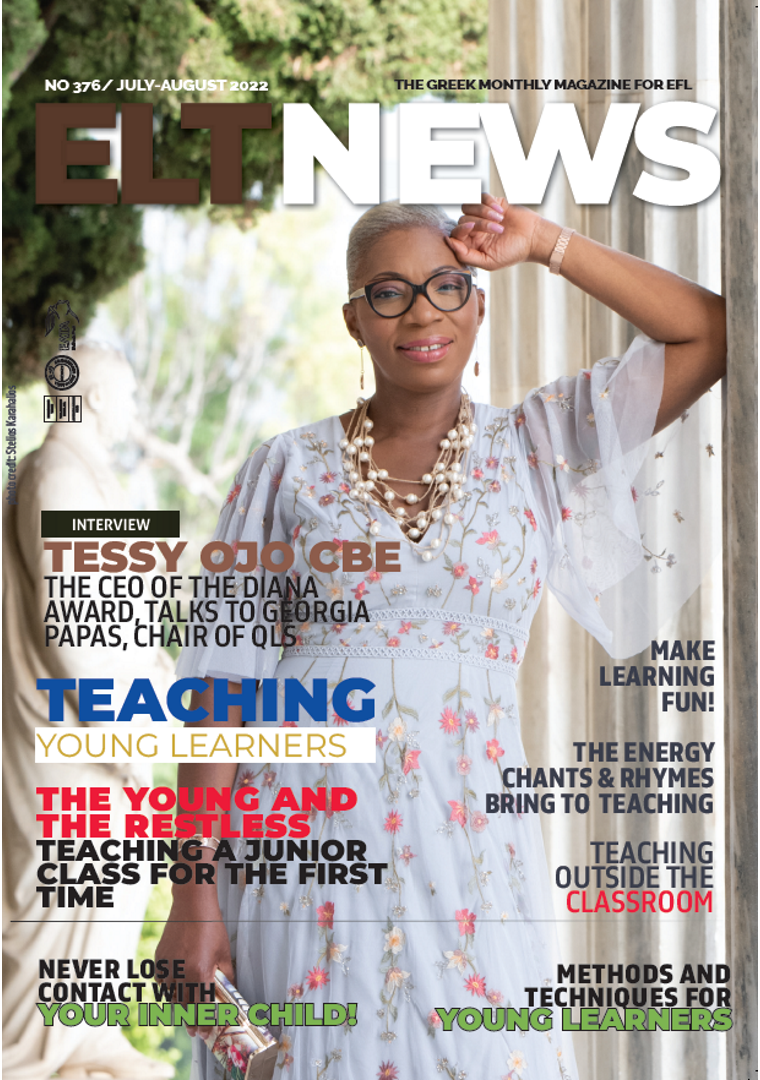Teaching English to young learners
Young learners, those attending preschool and kindergarten, do not have any personal reason for studying English.
It is simply another subject that they have to study at school or that their parents have told them they need to learn. At this point in their lives, they may not know or comprehend how important these classes can be. They might view your classes as simply another fun activity and that is just fine. Even at this early age, you can encourage them to develop an interest in learning English which will stay with them long after they have finished your classes.
Text by: Anastasia Spyropoulou
Teaching English to young learners requires a delicate balance of fun and work as well as a lot of patience and creativity. If you’ve taken language classes both as a child and adult, you know how vastly different the lessons were.
Young learners are curious, and enthusiastic, have a lot of energy but have difficulty staying focused for long. However, you can use that energy and curiosity to your full advantage by using engaging games and activities. The primary focus should be on communication and laying a solid foundation for further English coursework. Students should practice the different sounds of the English language and learn material such as the alphabet, numbers, colours , and shapes. You may choose to introduce some simple structures that relate to students’ everyday life. Reading and writing should be avoided in the beginning.
There is no need to assign homework at this stage but be sure to track individual and class progress so that students can visually see what they have learned and how they are doing.
Turn lessons into songs
Every English learner, both native and not, is familiar with, at the very least, one classic jingle. Yes, the ABCs are what we turn to for a reminder of what letter comes after Q. The song offers English speakers a comfortable reference point for all their alphabetical needs.
Turning vocabulary, grammar, and dialogues into catchy tunes is a fabulous method for teaching English to young learners. If you’re reviewing common material, try turning to YouTube to see if there’s already a suitable song out there. Otherwise, you can hone your inner Beethoven to compose a musical masterpiece using the tune of another easy song, such as Twinkle Twinkle Little Star.
Create visual diagrams to illustrate new vocabulary
Use colour and visual aids to keep kids’ attention longer. Head, shoulders, knees, and toes. These are a whole lot easier to point out on a smiling stick man than to write out in a vocabulary list.
Highlighting, underlining, and circling are all common visual tricks to help kids recall snippets of information. By creating visual diagrams they visualize what English looks like. As a bonus, students can more easily locate learning aids with distinct colours and illustrations among their folders of messy papers.
Encourage mnemonic devices to memorize grammar rules
Memory aids make it easier to remember hard-to-spell words or complex grammar points. Whether that means creating a mnemonic device in students’ native language or breaking it down into simpler English words, the goal remains the same: better memory!
A useful mnemonic for all levels of English learners is “-i before -e, except after c”. Once you can get your students to recite that phrase on command, expect those pesky i/e spelling mistakes to poof away!
Break up solitary study sessions with games
Ah, the holy grail of how to teach English to young learners -games.
Childhood education without games is like ryzogalo without cinnamon at the top. You simply can’t have one without the other. Games are especially effective teaching methods for young learners because kids are able to learn without realizing it. Active games release some bottled-up energy; quiet ones challenge and require concentration.
Review vocabulary through role-playing
Picking up the role of any character helps them develop speaking skills. After all, teaching English to children should be about building up speaking confidence. The perfect subject-verb-agreement and conjugations can be fine-tuned later!
Get some wacky wigs, sunglasses, and hats to help students step into character and feel more like they’re acting, not just presenting a dialogue. Once they really embrace their character, you might be shocked to find just how creative the little Shakespeares can get with their new vocabulary!
Repeat previous lessons in every class
Children won’t retain as much information as adults, so repetition is key to learning. Pack every class with tons of repetition from the previous lessons.
Get out of the classroom!
The idea of leading kids out into the big, wide world and outside the safe classroom walls may sound like a disaster waiting to happen. Do not become intimidated. If you have permission, take the kids out on a stroll. The change in scenery opens up a whole new box of situations to practice new vocabulary in its natural habitat.
Another tip to remember: You don’t have to constantly come up with new teaching methods for young learners. If you find your students respond well and enjoy a set of games, go ahead and continue to use them!
You can always modify the content and difficulty of each round. And, once you find your teaching groove, you’ll have all your lesson plans and games sorted out to use for each new set of students.
Remember: “Nothing can dim the light which shines from within.” Maya Angelou
